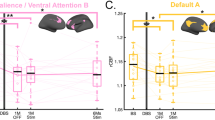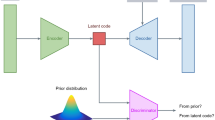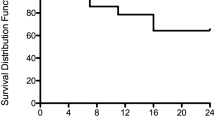Abstract
This study is based on the hypothesis of a paraventricular cerebral noradrenaline deficit in alcoholic Korsakoff's syndrome. In a randomized open study the effects of a 4-week treatment with the selective noradrenaline reuptake inhibitor reboxetine on (1) the salivary concentration of the noradrenaline metabolite MHPG and (2) changes in cognitive performance measured by the Mini Mental Status Test were examined. The study group consisted of 105 patients diagnosed with alcohol-related Korsakoff's syndrome (ICD-10: F10.6). Korsakoff's patients showed a reduced concentration of salivary MHPG compared to healthy controls; this reduction did not correlate with the results of the Mini Mental Status Test. An increase in salivary MHPG was found together with an improvement in the Mini Mental Status Test both in the verum group treated with reboxetine and in the control group upon completion of the 4-week study. However, a subgroup with a shorter duration of disease (<1 year) was found to profit significantly from reboxetine treatment, as shown by improvements in cognitive performance.
Similar content being viewed by others
Log in or create a free account to read this content
Gain free access to this article, as well as selected content from this journal and more on nature.com
or
Notes
This value was reported as the representative average of the Mini Mental Status Test from 19 Korsakoff patients in an unpublished study (Reuster and Buntrock, 1999).
References
Butters N, Granholm E (1984). The continuity hypothesis: alcoholic Korsakoff's Syndrome. In: Butters N, Wolfe J, Martone M, Granholm E, Cermak LS (eds). Neurobiology of learning and memory. New York: Guilford Press. pp 176–206.
Coull JT (1994). Pharmacological manipulations of the α2-noradrenergic system, effects on cognition. Drugs Aging 5: 116–126.
Folstein MF, Folstein SE, McHugh PR (1975). Mini-Mental-State. A practical method for grading the cognitive state of patients for the clinician. J Psychiatr Res 12: 189–98.
Ko HC, Lu RB, Shiah IS, Hwang CC (1997). Plasma free 3-methoxy-4-hydroxyphenylglycol predicts response to fluoxetine. Biol Psychiatry 41: 774–781.
Langlais PJ, Mair RG, Anderson CD, McEntee WJ (1987). Monoamines and metabolites in cortex and subcortical structures: normal regional distribution and the effects of thiamine deficiency in the rat. Brain Res 42: 140–149.
Mair RG, McEntee WJ (1983). Korsakoff's psychosis: noradrenergic systems and cognitive impairment. Behav Brain Res 9: 1–32.
Marneros A (1980). Alkoholisches Korsakow-Syndrom. Act Neurol 7: 87–94.
Martin PR, Adinoff B, Lane E, Stapleton JM, Bone GA, Weingartner H et al (1995). Fluvoxamine treatment of alcoholic amnestic disorder. Eur Neuropsychopharmacol 5: 27–33.
Martin PR, Weingartner H, Gordon EK, Burns RS, Linnoila M, Kopin IJ et al (1984). Central nervous system catecholamine metabolism in Korsakoff's psychosis. Ann Neurol 15: 184–191.
McEntee WJ, Mair RG (1978). Memory impaiment im Korsakoff's psychosis: a correlation with brain noradrenergic activity. Science 202: 905–907.
McEntee WJ, Mair RG (1980). Memory enhancement in Korsakoff's psychosis by clonidine: further evidence for a noradrenergic deficit. Ann Neurol 5: 466–470.
McEntee WJ, Mair RG (1984). Neurochemical pathology in Korsakoff's psychosis: implications for other cognitive disorders. Neurology 34: 648–652.
McEntee WJ, Mair RG, Langlais PJ (1981). Clonidine in Korsakoff's disease: pathophysiologic and therapeutic implications. Prog Clin Biol Res 71: 211–223.
McEntee WJ, Mair RG, Langlais P (1987). Neurochemical specificity of learning: dopamine and motor learning. Yale J Biol Med 60: 187–193.
Moffoot A, O'Carroll RE, Murray L, Dougall N, Ebmeier K, Goodwin GM (1994). Clonidine infusion increases uptake of 99mTc-exametazime in anterior cingulate cortex in Korsakoff's psychosis. Psychol Med 24: 53–61.
Mrazek M, Menges C, Steffes J, Thelen B, Erkwoh R (1999). Therapeutische Erfahrungen beim alkoholbedingten Korsakow-Syndrom. Nervenarzt 70: 790–794.
O'Carroll RE, Moffoot A, Ebmaier KP, Murray C, Goodwin GM (1993). Korsakoff's syndrome, cognition and clonidine. Psychol Med 23: 341–347.
Pfeiffer J (1985). Atrophic processes in the brain of chronic alcoholics. Nervenarzt 56: 649–657.
Poeck K (1998). Neurologie, 8th edn. Springer: Berlin, Heidelberg, New York.
Preuß UW, Soyka M (1997). Das Wernicke–Korsakow-Syndrom: Klinik, Pathophysiologie und therapeutische Ansätze. Fortschr Neurol Psychiatry 65: 413–420.
Reuster T, Rilke O, Oehler J (2002). High correlation between salivary MHPG and CSF MHPG. Psychopharmacology 162: 415–418.
Schwab KO, Heubel G, Bartels H (1992). Free epinephrine, norepinephrine and dopamine in saliva and plasma of healthy adults. Eur J Clin Chem Biochem 30: 541–544.
Stapleton JM, Eckardt MJ, Martin P, Adinoff B, Roehrich L, Bone G et al (1988). Treatment of alcoholic organic brain syndrome with the serotonin reuptake inhibitor fluvoxamine: a preliminary study. Adv Alcohol Subst Abuse 7: 47–51.
Thier P (1993). Alkoholfolgekrankheiten. In: Brandt T, Dichgans J, Diener H-C (eds). Therapie und Verlauf Neurologischer Erkrankungen. Stuttgart Berlin Köln, W. Kohlhammer. pp 841–863.
Victor M, Laurenco R (1978). Neurologic complications of alcohol abuse: epidemiologic aspects. Adv Neurol 19: 603–617.
Author information
Authors and Affiliations
Corresponding author
Rights and permissions
About this article
Cite this article
Reuster, T., Buechler, J., Winiecki, P. et al. Influence of Reboxetine on Salivary MHPG Concentration and Cognitive Symptoms Among Patients with Alcohol-Related Korsakoff's Syndrome. Neuropsychopharmacol 28, 974–978 (2003). https://doi.org/10.1038/sj.npp.1300118
Received:
Revised:
Accepted:
Published:
Issue date:
DOI: https://doi.org/10.1038/sj.npp.1300118
Keywords
This article is cited by
-
A dual-mode biosensor for salivary cortisol with antibody-aptamer sandwich pattern and enzyme catalytic amplification
Journal of Solid State Electrochemistry (2023)
-
Signal-on photoelectrochemical immunoassay for salivary cortisol based on silver nanoclusters-triggered ion-exchange reaction with CdS quantum dots
Analytical and Bioanalytical Chemistry (2022)



